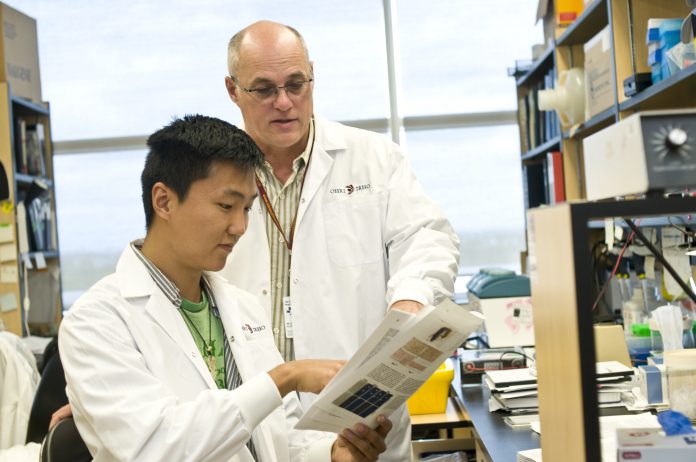Dr Michael A Rudnicki, CEO & Scientific Director at the Stem Cell Network gives an expert view on a new era in health care, powered by stem cells
In 1996, a 21-year-old aspiring police officer, Jennifer Molson, was diagnosed with aggressive multiple sclerosis (MS). Within five years, Jennifer was unable to manage everyday tasks, including cutting her food and taking a shower. The prognosis was that she would live her life in a wheelchair and require constant care. Dr Mark Freedman from The Ottawa Hospital was Jennifer’s neurologist. He and his research partner Dr Harry Atkins, a clinician/researcher, enrolled Jennifer in a clinical trial that took her stem cells, purified and fortified them and after extreme chemotherapy to knock out her immune system, returned the stem cells to rebuild a new, disease-free immune system. Today, with all traces of the disease eradicated, Jennifer has been cured. She has her life back – she works, enjoys family, skis and wears her high heels proudly. Jennifer’s story is extraordinary and is a demonstration of what can be achieved through the application of stem cells.
Stem cells are powering a new and exciting scientific field – regenerative medicine – and this field is expected to have a global market value of $53.7 billion by 2021. Stem cells are special, as they can make many copies of themselves and give rise to more specialised, or “adult” cells. We now know that most tissues contain their own rare populations of adult stem cells that help with maintenance and repair. One particular type of stem cell is especially powerful: known as the pluripotent stem cell, it is akin to a blank slate, capable of making any cell type in the body. Stem cells are invaluable to researchers for their ability to model development and diseases that may otherwise be difficult to study and have vastly expanded our understanding of how the body heals or succumbs to disease. This knowledge is fuelling the delivery of new ways to regenerate or repair cells, tissues and organs. The potential is extraordinary for fighting chronic diseases and illnesses that cost the Canadian healthcare system upwards of $190 billion annually.
In Canada, stem cell-based treatments are being utilised to fight severe blood disorders such as leukaemia, as well as aggressive multiple sclerosis and some rare diseases. And this is just the beginning. With support from the Stem Cell Network, clinical trials are underway in British Columbia and Alberta that are testing a novel stem cell therapy for type 1 diabetes. The research from these trials may change the way those who have type 1 manage the disease by eliminating constant measuring of blood sugar levels and eliminating insulin dependence.
In Montreal, researchers and clinicians are working with a specialised molecule and state-of-the-art technology that allows stem cells found in cord blood to be expanded or grow. This is critically important work for developing a stem cell product that is not only affordable but safe and effective for the treatment of blood diseases, particularly for patients who are currently ineligible or do not respond well to current therapies.
Jurisdictions around the world recognise the benefits of investing in stem cells – economic, population health and individual patient outcomes. California, Japan and the United Kingdom are all fighting to lead the field that matters the most for health. Canada is well positioned to compete; in fact, it was two Canadians who proved the existence of stem cells in the early 1960s. And it was two more Canadian scientists who were behind the 2016 launch of BlueRock Therapeutics – a multi-national biotech supported with a USD$225 million Series A investment. BlueRock is focused on bringing forward stem cell-based therapies for the treatment of cardiovascular and neurological conditions. Powered with Canadian ingenuity, we know this company will succeed.
It is just the beginning for stem cells and regenerative medicine. The challenge is to ensure the regulatory environment will allow for stem cell therapies to move through the clinical trials process effectively. We also require stable and predictable funding for research so that next generation therapies can be realised. Canada’s small but growing regenerative medicine sector requires support to scale-up and commercialise its products. It also requires access to a skilled and talented labour pool. And of course, the healthcare system must evolve and be able to integrate innovative therapies as the new standard of care.
Regenerative medicine is at a tipping point in Canada. It’s time to build on our foundation of scientific excellence and harness the benefits of regenerative medicine for the health of Canadians and the economic prosperity of our nation.
Dr Michael A Rudnicki, O.C., FRSC
CEO & Scientific Director
Stem Cell Network











